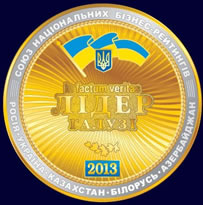Ukraine welcomes everyone on celebration of Rosh Hashanah
The history of Jewish people is inseparable from Ukraine. In Ukraine Hasidism was born and approved (literal translation - "the doctrine of piety," from the word "Hasid" - "pious"). From the outset, this mystical religious folk movement had a lot of different directions and branches. One from the very influential among them was the movement of Braslav Hasidim. Its founder and spiritual leader was a tzaddik (righteous man) Nachman of Breslov. He was born April 4, 1772 in the town of Mezhibozh. He was the great grandson of the founder of Hasidism, Rabbi Israel Baal Shem Tova(BESHT), and the grandson of the tzaddik Nachman from Gorodyanka known scholar and preacher of the early period of Hasidism, a student of the Besht. Rabbi Nachman had a boundless faith in God and considered a very important sense of joy and pleasure of prayer to God, as well as direct communication with the tzaddik and his spiritual heritage. He was one of the first to preach that prayer should not be crying, but must be accompanied by singing and dancing. This is a kind of symbolism: eternally persecuted people rejoice not only to be alive, but also because it has managed to keep his faith, writing and culture. Rabbi Nachman advised the Jews to pray in the language of Yiddish, which it is more understandable and accessible. Therefore, among other Bratslav Hasidim always stood excessive enthusiasm and spontaneity in prayers and religious ceremonies. Rabbi Nachman did not involve the accumulation of wealth. Above all, he put a simple way of life, honesty and sincerity. The simpler the person, the closer it is to God, but is the closest to him only a poor man. "He who earns his bread to the works of their hands, - he said - is aware of the greatness of God is more than aware of the angels." In 1802, Rabbi Nachman visited Uman and went to the Jewish Cemetery, where thousands of victims of massacres in 1766 were buried. Here he wished to be buried among the martyrs. Rabbi Nachman lived a short life, but the last years of his life were sad. His wife and two sons died from tuberculosis. Rabbi himself also contracted the disease. In 1810, he moved to Uman, because, in the words of Rabbi Nachman, "spirits of the dead are waiting for his faith." When he felt better, he was walking in the famous park "Sofievka" resting, listening to the murmur of streams, clean spring water, like a tear, very pleasant to the taste, cold, contains various salts and has some medicinal value. Here were written the following lines: "The brook that flows - a source of wisdom," "The whole world - a very narrow bridge, and the main thing - do not be afraid." Rabbi Nachman died on October 16, 1810. He commanded his disciples to bury yourself in this troubled land, the Jewish cemetery on the city, so that he could rescue the ruined soul. And also requested that after his death, during Rosh Hashanah all the followers of his teachings came to him in the grave, and all who exalt in this place to the heavens their prayer, Rabbi Nachman promised to find in him a defender of the Almighty. Indeed, there was even a man who would visit the grave of Rabbi Nachman and would not feel special sanctity that prevails in this place. And his grave in the old cemetery of Uman (Pushkin street) and to this day is the place of worship of his followers, who come here from all over the world. Since the death of Rabbi Nachman have no other Hasidic tzaddik, and they still call themselves - Bratslav Hasidic rabbi. Throughout the XIX century, the doctrine of Bratslav rabbi actively spread among the Jewish communities of Ukraine and Poland, and with the beginning of mass Jewish emigration in the XX century - in the U.S., Canada, Israel, France, England, Belgium, Holland and Australia. Today the religious community Braslav Hasidic has tens of thousands of followers. Belief in the power and majesty of tzaddik Nachman has become one of the most powerful ideas of Hasidism. Today Hasidism actually turned into a stronghold of Orthodox Judaism. To visit the tomb of Hasidic tzaddik Nachman identified with IMPERATIVE life. At least once in life, each Hasid must visit the grave, and this is best done during the celebration of New Year Rosh Hashanah. Of great importance is the pilgrimage and for the younger generation. They take with them on a pilgrimage to instill in them a holy attitude to religion. During the pilgrimage to Uman, Hasidic boys gather in groups and carry with them a kind of lessons when they study the texts of the Torah. It only remains to add that to this day Jews are singing a song in which the words are repeated many times tzaddik of Breslov: "The main thing is not to despair. Just do not despair! In any case - do not despair! "Even in the most difficult moments, a man must be strong in spirit, because as long as he is alive, he has hope. A person should do everything in his power to be joyful, and must at all times strive to have found happiness and joy others. He must always believe in God, hard to know that God is always in him and with him. That is the main idea of the philosophical teachings of Rabbi Nachman. After all, this is it, Rabbi Nachman once said these words: "Indeed there is no evil in the world, everything - the good, everything - are one!" |








